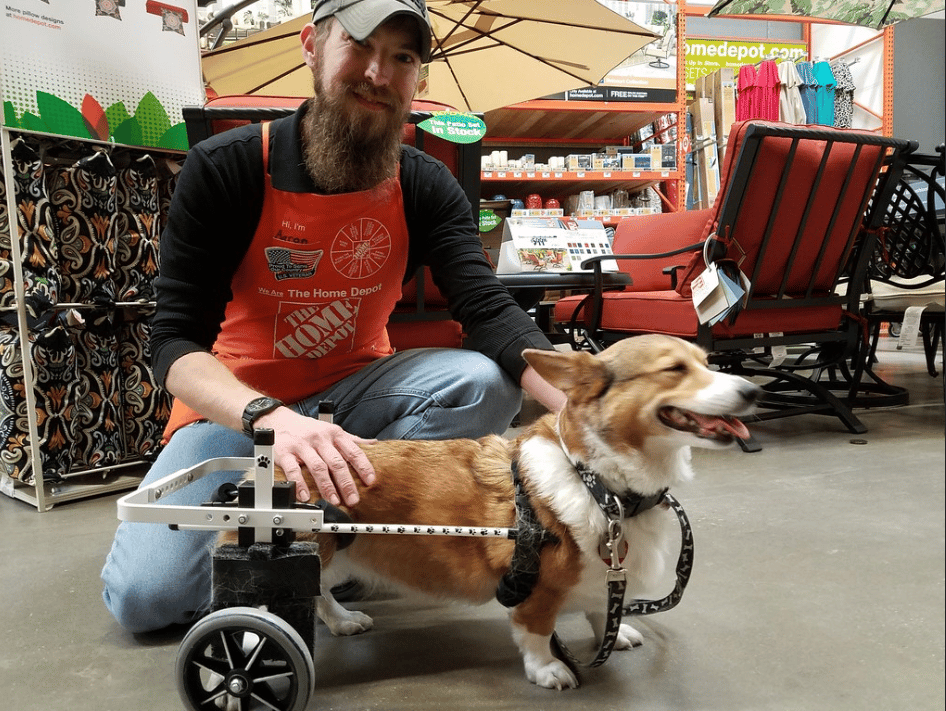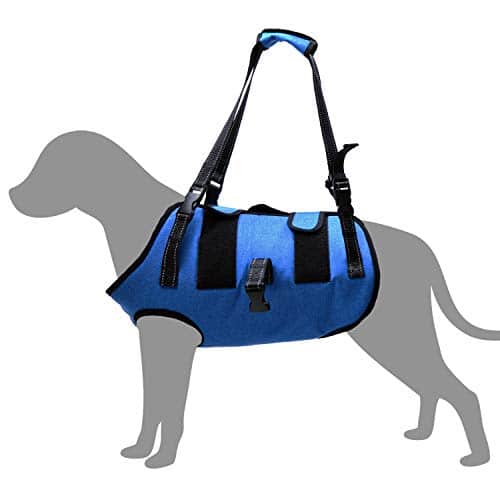6 Tips to help overcome your Dog Mobility Challenges
Dog Mobility Challenges. Many thanks to Lori Wade for this guest post giving tips to help your dog overcome mobility challenges.
Ever since Homer wrote of Odysseus’ dog Argus waiting 20 years before dying of happiness at his master’s return, we’ve known the remarkable loyalty of dogs. They are loyal to a fault, and have earned their title of “Man’s Best Friend.” It is only fair and fitting, therefore, that we repay that friendship when our four-legged friends need our help most.
Dog Mobility Challenges

No one wants to think about mobility issues plaguing their dogs. That said, whether because of age or injury, many dogs will experience mobility problems at some point in their lives. It is up to us to help them overcome those challenges.
A dog’s lack of mobility is a challenge for you and your dog alike, but with the help of these six tips, you’ll be able to help restore your four-legged friend to the quality of happy, pain-free life they deserve.
1. Look for Signs of Hesitation
Transitioning from a state of mobility to immobility is hard on anyone, especially a creature like a dog. They are used to being able to run free, and now they are being constrained by physical limitations.
That is enough to make anyone hesitant in how they proceed.
Understand that, whatever new tools or routines you introduce to help your dog, they may not take to it right away. This is natural. Ease them into the process, and make sure that you aren’t going faster than your dog can handle. Helping their mobility issues won’t do much good if you rush them through things and cause emotional distress in the process.
2. Know which Mobility Tools are
suited to which Conditions
Dog wheelchairs and harnesses are two of the most common tools for dealing with mobility issues. Each has its virtues and can help different dogs struggling with different mobility conditions.
Dog harnesses tend to be more temporary and geared toward smaller or miniature dog breeds. You fit the harness around the dog to provide them with more support as they walk with you holding the leash. This can be good for dogs with short-term rehabilitation programs.

Dog wheelchairs, meanwhile, suit dogs of most sizes and are a better mid to long-term solution. They wrap around your dog’s waist with wheels jutting out ahead of their front paws, or behind their hind legs in the case of a rear support dog wheelchair. This provides a great deal more support, with the wheels in particular engineered to help dogs remain upright and mobile by taking the pressure of their paws.
Dog wheelchairs can be a great option for owners looking to grant older dogs a sense of independence. As dogs get older, they become more feeble and thus become more immobile. This can be hard on dogs who are used to running around your home at will. One of the upsides of a dog wheelchair is that it allows your dog to roll around without you always needing to be present, as is the case with a harness.
Both dog wheelchairs, as well as harnesses, can help different dogs with different mobility needs. Knowing which is better suited to your dog and, in the case of dog wheelchairs, which model is the best fit can help your dog regain a sense of pain-free independence and confidence.

3. Be Patient
All of this will be a big transition for your dog. You, thus, need to be patient with them. They will very possibly be resistant or hesitant to the change at first, especially if they are older dogs and set in their ways. Understand that this is even more difficult for them than it is for you, and be patient as you help them through the process of getting acquainted with their new gear.
4. Let them Sniff and Lick the Mobility Gear
One way to help get your dog acclimated to their new mobility gear more quickly is to allow them to sniff and lick it. Dogs experience the world a great deal through their sense of smell and taste. This is how they get used to other dogs, and it is one way you can get them used to their new dog harness or wheelchair.

5. Provide Positive Reinforcement
Once they start to sniff and lick the mobility gear, pet them, have treats on hand, and give them positive reinforcement. It is vital that your dog forge a positive psychological link with this gear to acclimate themselves to it.
Rubberized, metallic gear can be scary for a dog who has no concept of what it is, and which will smell and taste different than most things they have likely experienced. Providing them with immediate positive reinforcement can help assuage those concerns.
6. Mobility Support for Eating and Grooming
In addition to simple mobility, there are issues related to eating and grooming you should be on the lookout to ensure that your dog is adapting to their new life. Some telltale signs of trouble include:
- Sagging rear ends due to their being unable or unwilling to keep them up
- Reluctance to bend down at the water bowl, and taking longer drinks to compensate
- Lying down when they eat or drink
- Odiferous or oily coats
- Reluctance to perform “shake offs”
Some potential tips here include:
- Putting down rugs for them for extra traction
- Raising water and food bowls to make them easier for dogs with bad backs
- Gently holding them while they perform “shake offs” so they don’t fall
Fred from Akron, New York
These lovely photos of Fred have been sent to us by his owner Dee who says:
“An older stray, Fred developed Degenerative Myelopathy after we had him a year or so. He loved his wheels, and his daddy loved making different designs for them.”
Thanks Dee – we love Fred’s ‘Summer Cruise Wheels!’



Dog Mobility Challenges – Conclusion
With these tips, you’ll be able to be a friend indeed to your four-legged friend in need.
Do you have a dog with mobility challenges? We would love to hear from you. Contact us here with your story and any photos!
Author’s BIO
Lori Wade is a journalist from Louisville. She is a content writer who has experience in small editions. Lori is currently engaged in news and conceptual articles on the pet care and veterinary industry. You can find her on LinkedIn. Hope you appreciate Lori’s useful insights!


